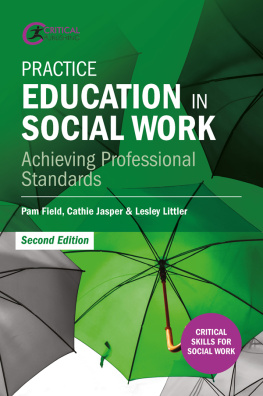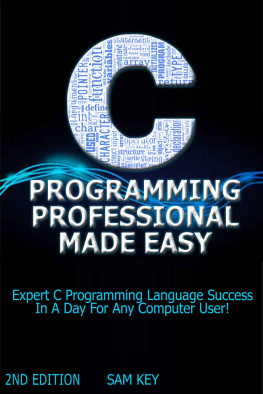Foreword by Richard DuFour
RTI, Professional Learning Communities, and
How to Respond When Kids Dont Learn

Austin Buffum
Mike Mattos
Chris Weber

Copyright 2009 by Solution Tree Press
Materials appearing here are copyrighted. With one exception, all rights are reserved. Readers may reproduce only those pages marked Reproducible. Otherwise, no part of this book may be reproduced or transmitted in any form or by any means (electronic, photocopying, recording, or otherwise) without prior written permission of the publisher and the author.
555 North Morton Street
Bloomington, IN 47404
800.733.6786 (toll free) / 812.336.7700
FAX: 812.336.7790
email:
solution-tree.com
Printed in the United States of America

ISBN 978-1-934009-33-8
To Dr. Harold E. Hester and Mr. Richard Johnson,
great educators and even greater friends
Austin Buffum
To Anita and Laurel, who inspire every aspect of my life
Mike Mattos
To my wife and daughtersPamela, Sophie, and Chloe
Chris Weber
Acknowledgments
We want to first acknowledge the many great colleagues with whom we have had the pleasure to work and who have made a real difference in the lives of countless childrenspecifically, the exceptional staffs of Marjorie Veeh and Richard Henry Dana Elementary Schools, Pioneer Middle School, and the Education Division of the Capistrano Unified School District. Many of the proven practices described in this book have been created through the collaborative efforts of these dedicated educators.
We further wish to acknowledge the support and guidance we have received from the outstanding staff at Solution Tree. President Jeff Jones, our editor Gretchen Knapp, and the professional development team have created an environment of integrity and trust in which our efforts have been nurtured and informed. In a day and age where most of corporate America is driven by profits and the bottom line, we are honored to work with a company that is singularly focused on the noble pursuit of improving schools across the United States and Canada.
We also want to acknowledge and thank our fellow PLC Associates who continue to work across North America in support of our commonly held belief that it is our job to ensure high levels of learning for all students.
Finally, we want to sincerely thank Rick DuFour, Becky DuFour, and Bob Eaker (the three Rs), who inspire our passion for education and from whom we continue to learn. Their collective wisdom has deeply impacted every aspect of our professional beliefs and practices, and their support and friendship have indelibly enriched our lives. We truly feel that in regards to these three, we must echo the words of Sir Isaac Newton, who in 1676 said, If I have seen further, it is by standing on the shoulders of giants.
Visit go.solution-tree.com/rti
to download all of the reproducibles
in this book .
Table of Contents
About the Authors
Austin Buffum
Austin Buffum, Ed.D., is retired as the senior deputy superintendent of the Capistrano Unified School District, which serves more than 51,000 students in South Orange County, California. For his excellent leadership, Dr. Buffum was selected 2006 Curriculum and Instruction Administrator of the Year by the Association of California School Administrators. During his 37-year career in public education, Dr. Buffum also served as a music teacher and coordinator, elementary school principal, curriculum director, and assistant superintendent. In addition to articles published in the Journal of Staff Development, American School Board Journal, and Leadership, he contributed a chapter, Trust: The Secret Ingredient to Successful Shared Leadership, to The Collaborative Administrator (Solution Tree, 2008). He shares his in-depth knowledge of building and sustaining PLCs with schools, districts, and state departments of education throughout North America.
Mike Mattos
The leadership of Mike Mattos, M.S., principal of Pioneer Middle School in Tustin, California, has resulted in consistently outstanding student achievement. Pioneer was named a California Distinguished School in 2003 and 2007, and was one of only eight schools in the nation featured in the professional development video series The Power of Professional Learning Communities at WorkTM: Bringing the Big Ideas to Life. Previously, as principal of Marjorie Veeh Elementary School in Tustin, Mike helped create a powerful professional learning community; in 2004, Veeh was one of only 18 California elementary schools to be named both a California Distinguished School and a National Title I Achieving School. Mikes chapter Walk the Lign: Aligning School Practices With Essential PLC Characteristics appeared in The Collaborative Administrator, and he contributed to Revisiting Professional Learning Communities at WorkTM: New Insights for Improving Schools (DuFour, DuFour, & Eaker, 2008). Mike is a nationally recognized presenter and consultant, sharing his knowledge with educators throughout North America.
Chris Weber
Chris Weber, Ed.D., has been a teacher at all grade levels, from kindergarten through 12th grade, and an administrator at the elementary and secondary school levels. The former principal of Richard Henry Dana Elementary School in Dana Point, California, he now serves as Director of K6 Instructional Services in Garden Grove Unified School District in Orange County, California. Dr. Weber is a former Air Force pilot and a graduate of the U.S. Air Force Academy.
Foreword
Schools and districts throughout the United States are confronting the challenge of responding to the legislative initiative known as response to intervention or RTI. Educators in traditional schools will regard this legislation as yet another imposition, an intrusion into their practice and an interruption of their real work. Educators in these schools are prone to regard virtually any task that calls for a coordinated and collective effortengaging in the accreditation process, creating new curriculum or assessments, developing and achieving school goals, analyzing evidence of student learning as part of a continuous improvement processas an annoying departure from their day-to-day labors. Inevitably, they respond to these intrusions with a spirit of compliance rather than a spirit of commitment and thus are able to minimize the impact of improvement initiatives.
The reason for their conditioned response is simple: In most schools, the work of educators is done in isolation. As a result, any task that requires a collaborative effort is considered a burden, an annoying add-on to the already too-full agendas of individual teachers working in isolation.
There are other schools, however, whose educators will integrate the RTI initiative into their existing, well-defined improvement processes and use it as a catalyst for enhancing both student and adult learning. Working collaboratively, learning together rather than in isolation, creating systematic responses to address problems, and using evidence of student learning to drive continuous improvement are deeply embedded in the culture of these schools. Most importantly, educators in these schools acknowledge and embrace a shared purpose of helping all students learn at high levels and take collective responsibility for achieving that shared purpose. In these schools, RTI will reinforce and strengthen the assumptions, commitments, and practices that already exist, and educators will work together to implement, assess, and improve the model.
Next page











